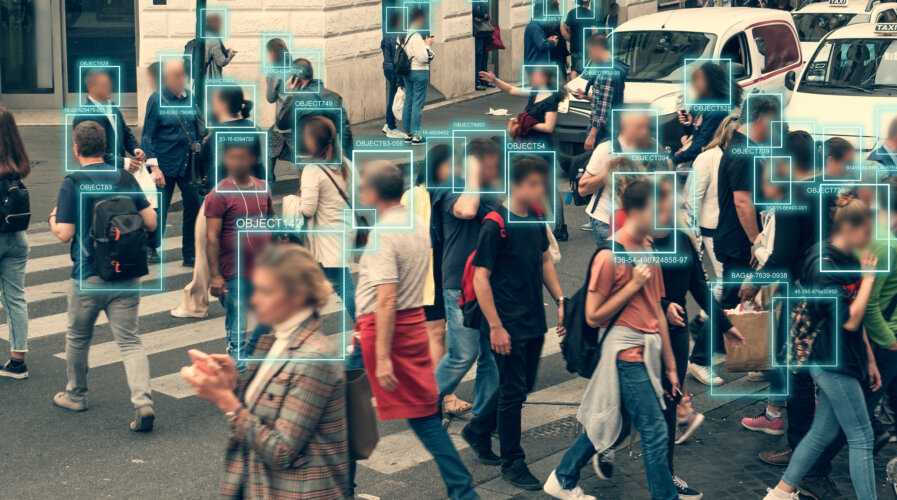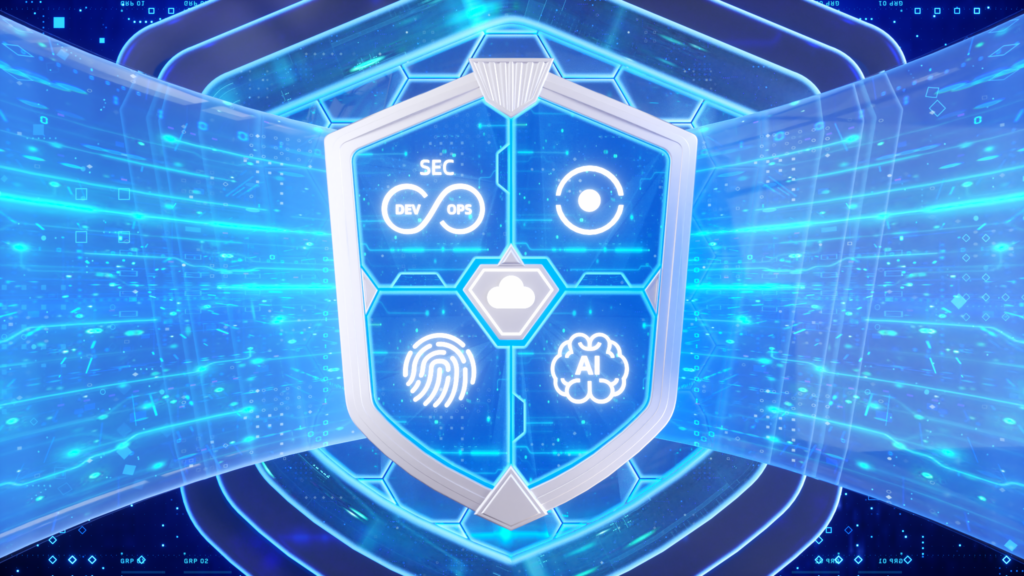
(Source – Shutterstock)
Generative AI among top 10 tech trends Alibaba predicts will dominate 2023
|
Getting your Trinity Audio player ready... |
Generative AI is the sensational piece of technology everyone has been discussing over the last couple of weeks. The traction on generative AI went into high gear when ChatGPT, a chatbot that answers questions clearly, was released a few weeks ago.
Since then, the AI-powered tool has been the talk of the town, with many praising it but also raising alarms about what the technology could eventually do. Generative AI has been around for some time- think natural language processing, machine learning techniques, and such. However, the technology has now evolved, thanks to deep learning, General Adversarial Network (GAN), and transformers.
According to the World Economic Forum, the field of generative AI can generate trillions of dollars in economic value. In fact, over 150 startups have emerged and are already operating in the space. As such, it is no surprise that large tech companies will also be looking at how they can make the most out of generative AI.
Alibaba’s DAMO Academy recently shared its annual forecasting of the leading technology trends that could shape many industries in the years ahead. DAMO believes that Generative AI will be among the leading technology trends in 2023 and could make further strides with its growing applications set to transform how digital content is produced. Aided by future technological advancements and cost reductions, DAMO predicts Generative AI to become an inclusive technology that can significantly enhance the variety, creativity, and efficiency of content creation.
“Looking towards 2023, the advancement of various technologies will drive software/hardware co-design and the integration of computing and communications technologies. The wide application of technologies will facilitate the rollout of AI and other digital technologies in vertical markets and promote the collaboration of public and private sectors and individuals in security technology and security management. The innovation driven by the advancement of technologies and their industry-specific application has become an irreversible trend,” commented Jeff Zhang, Head of Alibaba DAMO Academy.
Interestingly, DAMO also highlights several other emerging technologies that could make an impact in 2023. Here are the top 10 emerging technologies and trends that Alibaba’s DAMO Academy feels will make an impact this year.

Generative AI (Source – Alibaba)
Trend 1: Generative AI.
Generative AI generates new content based on a given set of text, images, or audio files. Currently, Generative AI is mainly used to produce prototypes and drafts and is applied in scenarios like gaming, advertising, and graphic design. Along with future technological advancement and cost reduction, Generative AI will become an inclusive technology that can significantly enhance the variety, creativity, and efficiency of content creation.
In the next three years, we will see business models emerging and ecosystems maturing as Generative AI becomes widely marketized. Generative AI models will be more interactive, secure, and intelligent, assisting human beings to complete various creative work.
Trend 2: Dual-engine Decision Intelligence.
In the past, the traditional decision-making method is based on Operations Research. Due to its limitations in handling problems with great uncertainty and its slow response to large-scale problems, academia and industry began to include machine learning in decision optimization. The two engines are perfect complements to each other, and when used in tandem, can improve the speed and quality of decision making. In the future, this technology is expected to be widely used in a variety of scenarios to support dynamic, comprehensive, and real-time resource allocation, such as real-time electricity dispatching, optimization of port throughput, assignment of airport stands, and improvement of manufacturing processes.
In the future, dual-engine decision intelligence will be applied in more scenarios. It will serve to increase the number of entities and expand the scale in regional resource allocation scenarios, and eventually achieve dynamic, comprehensive, and real-time resource allocation.
Trend 3: Cloud-native Security.
Cloud-native security is implemented to not only deliver security capabilities that are native to cloud infrastructure, but also improve security services by leveraging cloud-native technologies. Security technologies and cloud computing are becoming more integrated than ever before. We have witnessed applied technologies evolve from containerized deployment to microservices and then to the serverless model, and security services embraced the shift to become native, fine-grained, platform-oriented, and intelligent.
In the next three to five years, cloud-native security will become more versatile and adapt more easily to multi-cloud architectures. It will also become more conducive to building security systems that are dynamic, end-to-end, precise, and applicable to hybrid environments.
Trend 4: Pre-trained Multimodal Foundation Models.
Pre-trained multimodal foundation models have become a new paradigm and infrastructure for building artificial intelligence (AI) systems. These models can acquire knowledge from different modalities and present the knowledge based on a unified representation learning framework. In the future, foundation models are set to serve as the basic infrastructure of AI systems across tasks of images, text, and audio, empowering AI systems with cognitive intelligence capabilities to reason, answer questions, summarize, and create.

Cloud-native Security (Source – Alibaba)
Trend 5: Hardware-Software Integrated Cloud Computing Architecture.
Cloud computing is evolving towards a new architecture centered around Cloud Infrastructure Processor (CIPU). This software-defined, hardware-accelerated architecture helps accelerate cloud applications while maintaining high elasticity and agility for cloud application development. CIPU will become the de facto standard of next-generation cloud computing and bring new development opportunities for core software R&D and dedicated chip design.
Trend 6: Predictable Fabric based on Edge-Cloud Synergy.
Predictable fabric, a host-network co-design networking system driven by advances in cloud computing, aims to offer high-performance network services. It is also an inevitable trend as today’s computing and networking capabilities gradually converge on each other. Through the full-stack innovation of cloud-defined protocols, software, chips, hardware, architecture, and platforms, the predictable fabric is expected to subvert the traditional TCP-based network architecture and becomes part of the core network in next-generation data centers. Advances in this area are also driving the adoption of predictable fabric from data center networks to wide-area cloud backbone networks.
Trend 7: Computational Imaging.
Computational imaging is an emerging interdisciplinary technology. In contrast with traditional imaging techniques, computational imaging makes use of mathematical models and signal processing capabilities, and thus can perform unprecedented in-depth analysis of light field information. This technology is already used on a large scale in mobile phone photography, health care, and autonomous driving. In the future, computational imaging will continue to revolutionize traditional imaging technologies, and give rise to innovative and imaginative applications such as lensless imaging, and non-line-of-sight (NLOS) imaging.

Dual-engine Decision Intelligence (Source – Alibaba)
Trend 8: Chiplet.
Chiplet-based design allows manufacturers to break down a system on a chip (SoC) into multiple chiplets, manufacture the chiplets separately by using different processes, and finally integrate them into an SoC through interconnects and packaging. The interconnect standards of chiplets are being unified into a single standard, accelerating the industrialization process of chiplets. Powered by advanced packaging technologies, chiplets may bring in a new wave of change to the R&D process of integrated circuits and reshape the landscape of the chip industry.
Trend 9: PIM.
Processing in Memory (PIM) technology is the integration of a CPU and memory on a single chip, which allows data to be directly processed in memory. In the future, compute-in-memory chips are projected to be used in more powerful applications such as cloud-based inference. This will shift the traditional computing-centric architecture towards the data-centric architecture, which will have a positive impact on industries such as cloud computing, AI, and Internet of Things (IoT).
Trend 10: Large-scale Urban Digital Twins.
The concept of the urban digital twins has become a new approach to refined city governance. So far, large-scale urban digital twins have made major progress in scenarios such as traffic governance, natural disaster prevention, and management, carbon peaking, and neutrality. In the future, large-scale urban digital twins will become more autonomous and multi-dimensional.
The ten trends are compiled through analyzing public papers and patent filings over the past three years and conducting interviews with almost 100 scientists, entrepreneurs, and engineers worldwide. The trends are expected to achieve accelerated breakthroughs and impact positively across core industries economically and socially.
READ MORE
- Safer Automation: How Sophic and Firmus Succeeded in Malaysia with MDEC’s Support
- Privilege granted, not gained: Intelligent authorization for enhanced infrastructure productivity
- Low-Code produces the Proof-of-Possibilities
- New Wearables Enable Staff to Work Faster and Safer
- Experts weigh in on Oracle’s departure from adland


